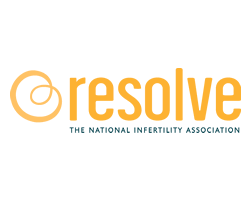What You Can Expect As an Intended Parent
The surrogacy process is very intricate and it can be overwhelming at times. Choosing an agency to walk you through the 12-24 month journey can go a long way towards maintaining your peace of mind. We are grateful you have chosen to explore the process with Egg Donor & Surrogate Solutions. Our desire is to educate, support, and guide you through the journey so you can have a very pleasant and memorable experience. Here is a guide to get you started.
As intended parents, you will need to consult with an IVF physician for medical screening. The intended father’s sperm and/or the intended mother’s eggs will be analyzed to determine if they can be used to create embryos. Once embryos are created, you will reach out to us to help you find a gestational carrier.
The initial step with our agency, is to complete a full, online application. Once your application is complete, you will schedule a consultation with our team to learn about the surrogacy process. We will educate you on our role of:
- Offering legal, medical, insurance and financial guidance
- Screening potential surrogates
- Setting up meetings with potential carriers
- Guiding you through the surrogacy process, from matching with a surrogate to delivery
Once you and your surrogate decide to work together, your gestational carrier will need to have medical and psychological screening done:
- Psychological evaluations are done to anticipate problems that may arise and to identify any psychological reason the gestational carrier should not proceed with surrogacy.
- Medical examinations are done to screen for infectious diseases and sexually transmitted diseases.
- Other medical exams and blood work that may be required.
Once medical and psychological screening is completed, both parties will need to be represented by an attorney specializing in third-party reproduction to represent them in the contract phase. Agreements should be drafted based on state laws and validated through the judicial system so everything is conducted in a legal manner.
After all of the medical screening has been done:
- The gestational carrier will start medications to thicken the lining of her uterus, and she will be on medications for approximately 4-6 weeks, depending on the protocol of the IVF clinic.
- Once the surrogate’s uterine lining is optimal, the most viable frozen embryo(s) are thawed and transferred to the uterus of the surrogate via IVF.
- The surrogate typically waits 9 to 14 days before taking a pregnancy test; if the surrogate is pregnant at that time, an ultrasound is scheduled two weeks later to determine the number of embryos that implanted.
- The baby’s heartbeat can typically be seen around 7or 8 weeks gestation.
- After the pregnancy reaches 8 to 10 weeks gestation, the IVF physician will discharge the surrogate from his/her care to the care of her OB.
- At this time, the surrogate’s OB will monitor her for the duration of the pregnancy.
- At 38-40 weeks, CONGRATULATIONS, your little one is here!
Read what our gestational carriers have to say about the best part of their experience and their motivation for helping intended parents grow their families.





